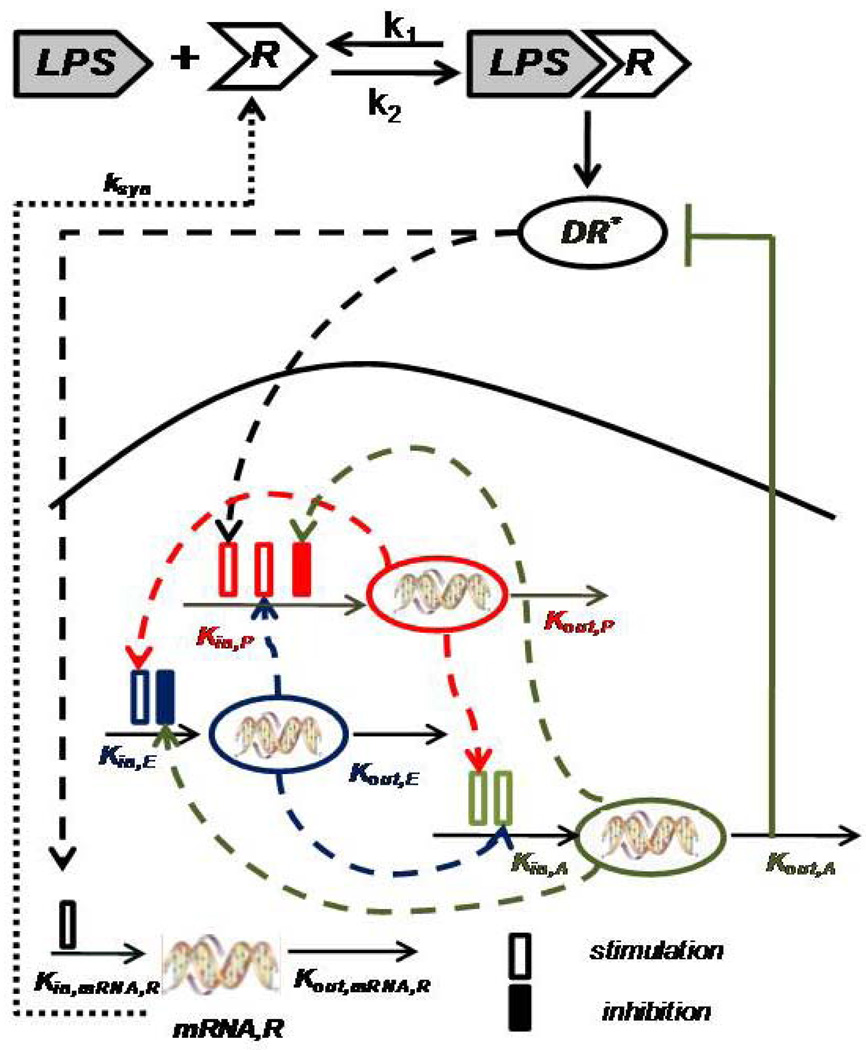Figure 6.
Qualitative Structure of the Indirect Response Model: LPS binds to the receptor (R) and forms the complex (LPSR) while it activates the signaling complex (DR*) which indirectly stimulates the production rate Kin, P of the pro-inflammatory (P) response. The pro-inflammatory response indirectly stimulates the production rate of the energetic (E) response (Kin, E) and the production rate of anti-inflammatory (A) response (Kin, A). The energetic response will stimulate both pro-inflammation and anti-inflammation whilst anti-inflammation will serve as the immunoregulatory component of the system restoring homeostasis intracellularly.

